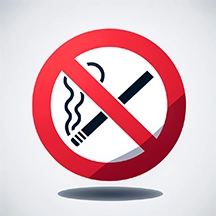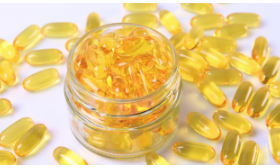7 Tips to fast liposuction recovery
Liposuction surgery is the process of removing unwanted fat to provide patients with the body they have always desired. In order to complete liposuction, a board-certified plastic surgeon must operate through the superficial and deep layers of fat. Liposuction results are instantaneous, and recovery is tolerable, but there are 7 tips to fast liposuction recovery. Before diving into the 7 helpful tips let’s review the expected time frame for recovery.
By post-op days 2-4, patients are allowed to start moving around and doing normal activities of daily living such as cooking, brushing their hair, and going to the restroom. By one week, the patient is able to return to all their daily activities. By two weeks, the patient may start operating motor vehicles. This is because patients are prescribed narcotics for pain, thus forbidding them to drive. Just keep in mind that each patient responds to pain differently.
I have personally operated on patients who were pain-free 5 days post-op and started driving even earlier than 1 week. Yet, some patients need the entire two weeks to recover from the pain. At 3 weeks after surgery, patients are free to return to the physical activity of their liking. They can return to weightlifting, running, hiking, etc. During their recovery process, we like to follow up and check in with patients regularly. This timetable includes visits at 1 week, 1 month, 3 months, 6 months, and 1 year after your surgery. Committing to your follow-ups and following our 7 helpful tips will essentially help you recover faster from liposuction surgery.
Tip #1 to Fast Liposuction Recovery
The first tip is to avoid nicotine and all smoking products at all times. This tip is essential! If you are a smoker you need to completely quit smoking 2 months prior to your surgery date. This is because nicotine is a potent vasoconstrictor to your blood vessels. What does this mean and why does it matter? When nicotine enters your bloodstream it directly contracts your arteries and veins thus inhibiting blood flow to the skin. It is important to understand that liposuction surgery results in injury to your blood vessels and compromised blood flow to the skin. If you compound this injury with nicotine exposure you will risk possible skin compromise and skin injury.

Tip #2 to Fast Liposuction Recovery
The second tip is intended to reduce swelling. We do this by providing custom-made foam-tailored garments. Both are placed directly on your body right after the liposuction procedure. The garments help minimize the swelling by providing just the right amount of pressure. This is because swelling will prevent the influx of nutrition and the removal of waste products from your skin cells. Furthermore, they also allow the fat cells to evenly settle in place. Infrequently, we have had our patients remove their garments prematurely which leads to uneven settling of fat cells compromising the aesthetic outcomes. The compression garments are strictly worn for the first two weeks following surgery.
Tip #3 to Fast Liposuction Recovery
The third tip is to avoid any type of blood thinners. Some examples are fish oil and omega-3 fatty acids found in multivitamins. Other examples are pro-inflammatory products that help with pain control such as NSAIDS that include Motrin, Ibuprofen, Naproxen, and Aspirin. Avoiding blood thinners will lead to less bruising and less risk of hyperpigmentation. This is because when your blood is thin, it tends to ooze into the soft tissues and induces inflammatory cells. Avoiding products like this will result in less pain, less bruising, and less hyperpigmentation. It also helps surgeons limit blood loss in larger Lipo 360 cases.

Tip #4 to Fast Liposuction Recovery
The fourth tip to decrease swelling following liposuction surgery is to consume a high-protein diet before and after your surgery. Essential food groups that can be considered are poultry, seafood, beans and lentils, nuts, eggs, and tofu. Proteins contain amino acids, which are the building blocks of tissue regeneration. When you eat proteins, your body breaks down the protein into its essential amino acid blocks which are then utilized to help repair your tissue. Also, when your amino acids are circulating in your bloodstream it keeps the fluid in your vessels and prevents it from oozing into the soft tissues where it can have a negative effect.

Tip #5 to Fast Liposuction Recovery
The fifth tip is to initiate deep breathing exercises immediately after surgery. There are two reasons why this helps with a speedy liposuction recovery. The first is that deep breathing exercises lead to a relaxed state of mind. Avoiding stress is the root cause of so many disorders including panic attacks. When your body is stressed your adrenal gland can release neurotransmitters putting you in a state of fight response.
The second reason is that deep breathing exercises can help avoid atelectasis which is a condition describing the collapse of air-breathing cells in your lungs. These alveolar cells are an essential component that allows for gas exchange. Of course, breathing is an essential part of recovery, but unfortunately, general anesthesia is known to cause your alveoli to deflate leading to atelectasis. This is because general anesthesia changes your regular breathing pattern and affects the exchange of lung gases. Hence, deep breathing exercises before and following surgery recovery will promote a full range of gas exchanges which can help avoid atelectasis.
Tip #6 to Fast Liposuction Recovery
The sixth tip is to start moving around as much as possible after your surgery. This will help desensitize your nerves. Moving around helps your nerves to loosen up leading to less pain and a faster recovery. Also, when we are in a prolonged stationary position during surgery and postoperatively, blood clots also known as DVTs can form that can be dangerous. By moving around quickly following surgery you will avoid the formation of DVTs.
Tip #7 to Fast Liposuction Recovery
The final useful tip to a faster recovery after liposuction is to attend to your serial lymphatic messages. Similar to your post-op appointments when you meet with your surgeon, it is essential to meet with your massage therapists regularly for the first two weeks after surgery. Each day after surgery your therapist will spend an hour and a half massaging your body everywhere that liposuction was performed. Lymphatic massages help reduce swelling and ensure that highlights created by your surgeon are not effaced. If you follow these helpful 7 tips to fast liposuction recovery, you will gain the most advantage from your surgery.

Conclusion: 7 tips to fast liposuction recovery
Tips for Smooth Liposuction Recovery and Healing
Liposuction can transform your body contours, but recovering comfortably in the weeks following surgery is imperative. Learning tips to make your liposuction recovery easier ensures you heal optimally.
Why Follow Post-Op Guidelines Closely After Liposuction?
The first 6-8 weeks following liposuction are a critical period as your body needs time to (Momeni et al., 2021):
- Allow inflammation and trauma from surgery to fully resolve
- Clear away damaged fat cell debris released during treatment
- Enable new blood vessel formation for improved circulation
- Permit skin to properly adhere to newly contoured areas
- Rebuild collagen networks damaged by the cannula insertion
- Absorb any residual fluid or swelling
Be in close contact with your surgeon
Contact your surgeon immediately if you experience:
- Fever over 100°F which may indicate infection
- Significant pain not relieved by medication
- Excess swelling accompanied by pain or heat
- Bleeding that continuously soaks through dressings
- Purulent discharge (pus) from the incisions
- Severe lack of energy, dizziness, or other concerning symptoms
Communicating post-op problems right away prevents further complications.
Keep Follow-Up Appointments As Scheduled
Consistently attending follow-up visits allows your care team to:
- Monitor your healing and recovery progress
- Address any concerns that arise
- Modify your directions as needed
- Ensure you are healing on track
- Identify any potential issues early before they escalate
Follow-ups are key for optimal safety and results.
Summary: 7 Tips to fast liposuction recovery
Skipping proper aftercare jeopardizes your results and may warrant revision surgery. The success of your liposuction surgery is predicated on a seamless recovery period. We hope that you find the 7 tips to fast liposuction recovery helpful.

